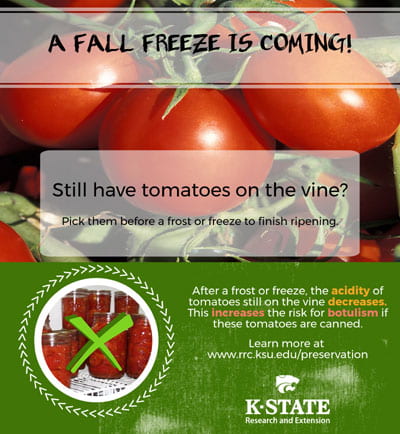 Small food processors add value and support for local communities. This includes farmers market vendors. For some food products, such as acidified foods, it is required the food processor be trained to process these foods safely. Acidified foods or formulated acid foods examples are pickles, salsa, BBQ sauce, and others.
Small food processors add value and support for local communities. This includes farmers market vendors. For some food products, such as acidified foods, it is required the food processor be trained to process these foods safely. Acidified foods or formulated acid foods examples are pickles, salsa, BBQ sauce, and others.
The Better Process Control School for Acidified Foods is an FDA-recognized course for operators or manufacturers who produce thermally processed acidified foods. The course is being offered by Kansas State University and University of Missouri.
Those passing two exams with a grade of 70% or higher will receive a Certificate of Course Completion to fulfill the training requirements of the FDA Acidified Food regulations. Exams will be open book, multiple choice and will be online. Exams generally require no more than one hour to complete. Homework is required.
Topics covered include microbiology of food preservation, formulating acid/acidified food products, containers and closures, record keeping, and FDA process of filing.
Information and Registration
Cost: $400
Course Dates: October 9-10, 2025 via Zoom
Registration deadline:
September 26, 2025
 The Women Managing the Farm conference is now called Women Grow the Farm! The name has changed, but the mission is the same, to focus on women who lead, build, expand and grow farms in Kansas.
The Women Managing the Farm conference is now called Women Grow the Farm! The name has changed, but the mission is the same, to focus on women who lead, build, expand and grow farms in Kansas.
 Halloween is almost here! When deciding what treats to buy to hand out to neighborhood goblins, keep in mind those who have food allergies. Always read the ingredient statements on treat wrappers and packaging to identify food allergens and to identify other suspicious problems.
Halloween is almost here! When deciding what treats to buy to hand out to neighborhood goblins, keep in mind those who have food allergies. Always read the ingredient statements on treat wrappers and packaging to identify food allergens and to identify other suspicious problems.



 National Clean Your Refrigerator Day is November 15th! But this cleaning step is important many times of the year. One example is after a power outage.
National Clean Your Refrigerator Day is November 15th! But this cleaning step is important many times of the year. One example is after a power outage.